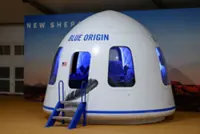Thanks to algorithms, satellites can now be particularly effective tools for mapping plastic pollution in the Mediterranean Sea. — AFP Relaxnews
Thanks to satellite images and advanced algorithms, researchers have succeeded in developing an initial, fairly precise map of the plastic pollution in the Mediterranean Sea.
For a long time, it was difficult to accurately map the amount of plastic waste on the surface of the sea, since this waste can be too small to generate a signal that's detectable from space. Artificial intelligence has changed all that. Today, thanks to advanced algorithms, satellites can be particularly effective tools for quantifying this type of pollution.
A group of researchers from Spain's Institut de Ciències del Mar (ICM) and the University of Cadiz studied a whole series of images taken over six years by the European Copernicus Sentinel-2 satellite over the Mediterranean Sea. A total of 300,000 images were examined.
The results show large clusters of waste within floating structures, the largest of which can be several kilometers long. An initial map was thus produced, suggesting that the quantity of floating plastic found in the Mediterranean over the period 2015-2021 could cover an area of around 95 km2. The study also reveals that, in its majority, litter of continental origin is confined to the first 15 km of sea from the coast.
The sensors installed on the satellite were in no way designed to detect plastic waste. It is only after a long learning process that these algorithms were able to account for the massive presence of this waste.
Now, the researchers are advocating the installation of a plastic detection sensor on future satellites to report on the presence of plastic not only in the Mediterranean, but in all the world's seas and oceans. In their view, this would increase the ability to detect plastic in the ocean by a factor of 20.
By comparing this data with other environmental factors, it may be possible to gain a better understanding of the mechanisms that form these clusters of plastic debris, and consequently to better guide actions and regulations to combat this marine pollution that has a lasting impact on biodiversity.
The scientists' research, funded by the European Space Agency (ESA), is published in the journal, Nature Communications.
On Wednesday, Sept 4, 2024, the ESA sent a new Earth observation satellite into space as part of its Copernicus program, designed to collect and deliver high-quality, up-to-date data on the state of the planet. Named Sentinel-2C, it will replace Sentinel-2A in the Sentinel-2 constellation. – AFP Relaxnews





